Blog – April 16, 2025, Fifth Week Honors Seminar
Drinks, Brands & Brain Chemistry: A Masterclass in Optimism
Before a single slide lit up the screen, Professor Manfred Uhl invited us to grab a drink from the kitchen. Not your typical academic start—but that’s exactly the point. This small, thoughtful gesture was more than hospitality; it was a live demo in trust-building. How often do you feel instantly at ease in a classroom? Trust, we learned, isn’t built with big speeches—it starts with human connection. So here’s the question: If a brand greeted you with a cold drink and a warm smile, would you trust it more?
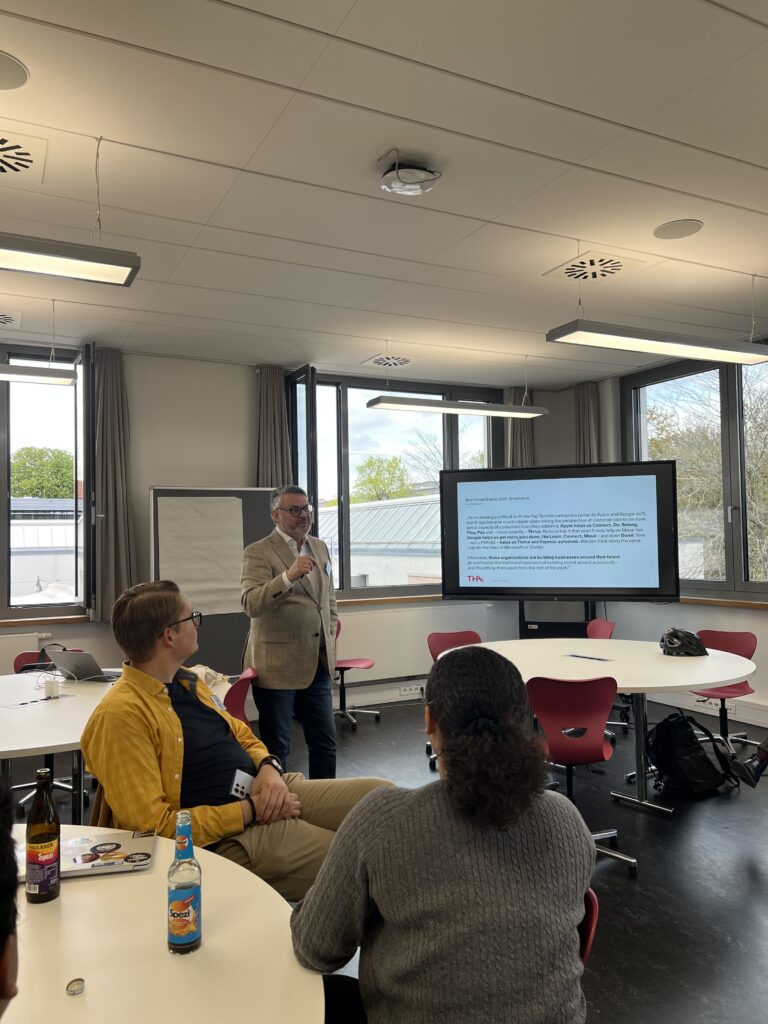
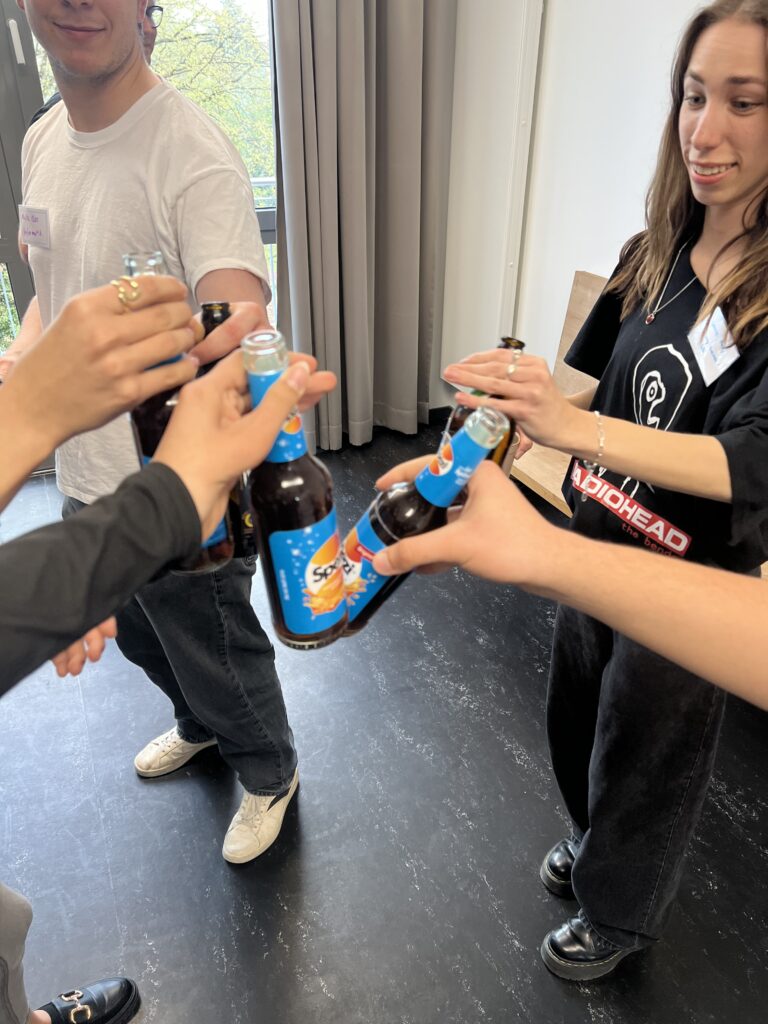
“Optimism, Oxytocin, and Other Unexpected Brand Strategies”
This week’s seminar, “Optimism Needs Trust: How to Build Brands with Trust,” explored the intersection of emotional psychology, branding strategy, and good old-fashioned human behavior. Professor Uhl guided us through what makes a brand not just successful—but trustworthy.
We kicked off with a definition of optimism (thanks, ChatGPT!) and discussed how it plays a foundational role in shaping brand relationships. Far from just being a sunny mindset, optimism in branding can manifest as playfulness (MINI), grit (Nike), or inspiration (Puma). The class also dove into the concept of oxytocin—the hormone behind trust—and how it applies to both personal relationships and brand loyalty.
To be optimistic means to be positive, confident, happy, curious… Amazing?
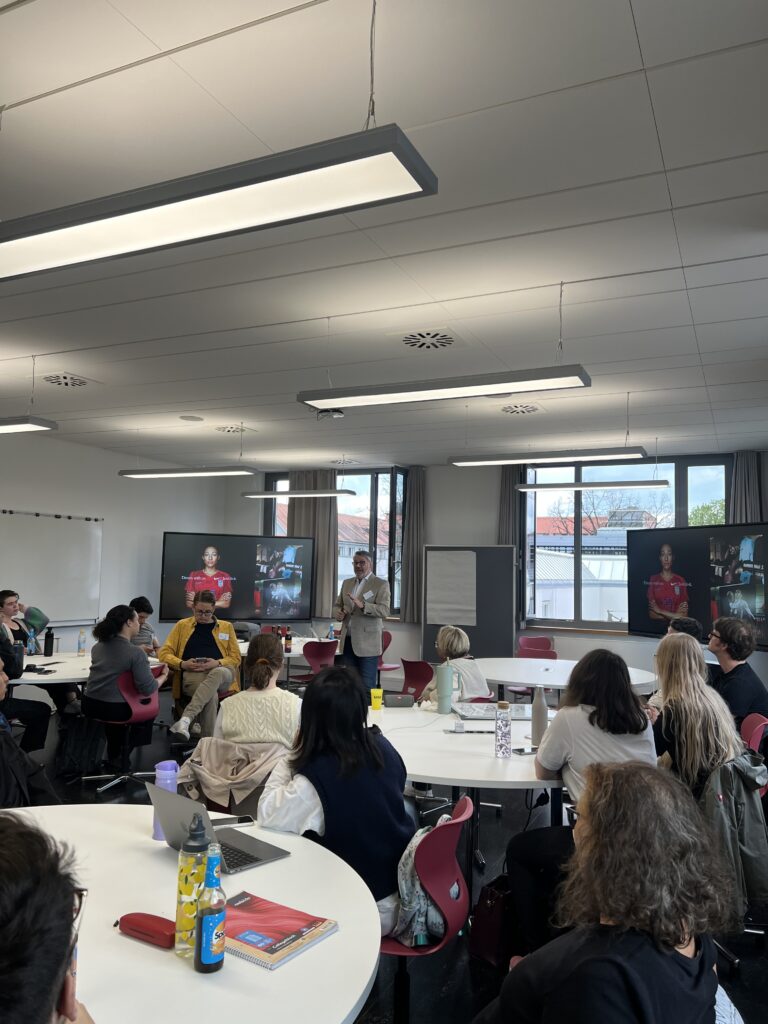
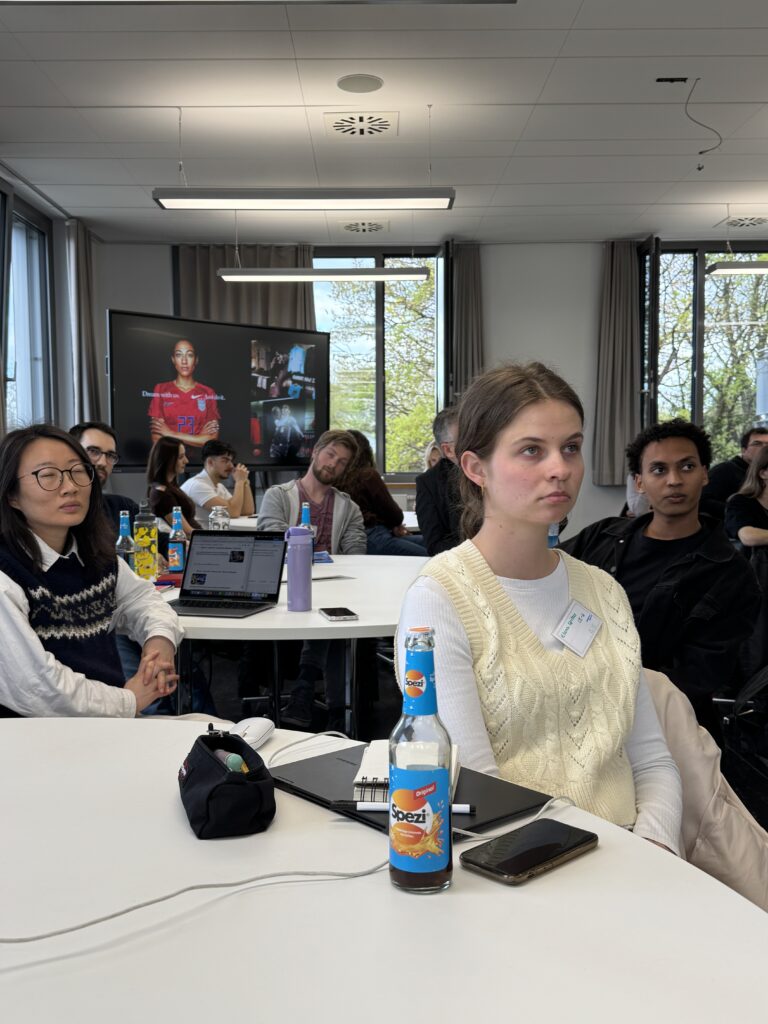
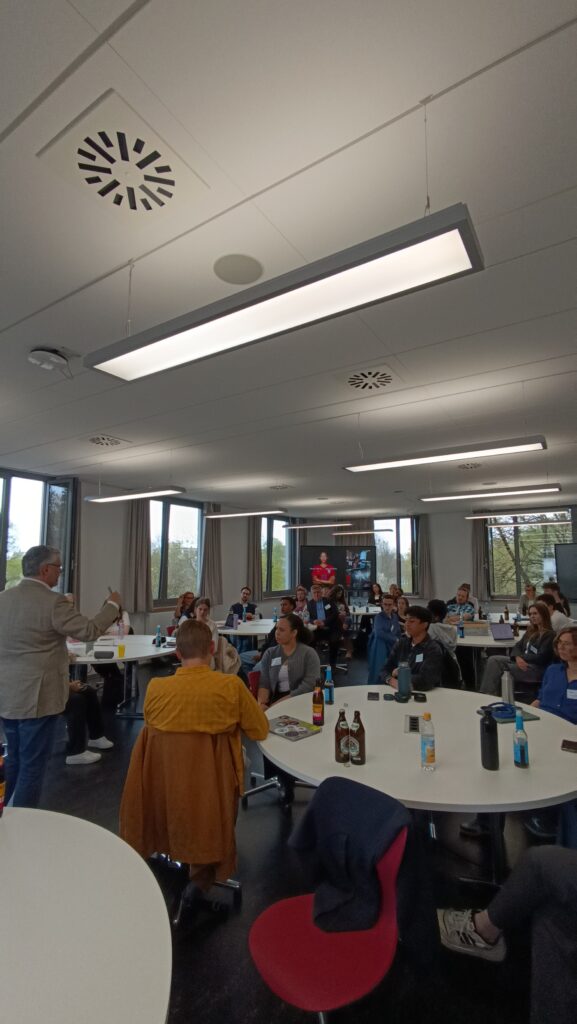
We reflected on real-world brand examples like Apple, which many cited as a gold standard of trust thanks to its innovation, consistency, and clear communication. It wasn’t just a class about marketing—it was a conversation about identity, emotion, and why we believe what we believe.
“Aha! Moments, Hormones, and Why MINI is Cooler Than You Thought”
💡 Here’s what stuck with us long after the drinks ran out:
- Trust starts small: A drink at the door or a consistent logo—tiny acts that signal reliability. Just like in personal relationships, trust in branding is built through consistent, seemingly minor actions.
- Optimism wears many faces: MINI’s bold “Normal, what’s normal?” campaign encouraged embracing individuality and joy. Contrast that with Nike’s powerful “Winning Isn’t Comfortable” video, which presents a tougher, no-excuses version of optimism. Both connect deeply—just in different emotional languages.
- Brands we trust live their values: Apple didn’t earn loyalty through ads—it earned it by consistently delivering high-quality products while clearly communicating values like simplicity, design, and privacy. We realized that authenticity, not advertising, is the backbone of real trust.
- Trust is chemistry and consistency: Professor Uhl brought in the role of oxytocin—the brain’s trust hormone—to explain why emotional branding works. When a brand makes you feel safe, supported, or seen, it creates a chemical connection that makes loyalty easier and more natural.
- Identity = Power: A brand’s internal view (identity) must match its external image to be truly credible. When those two align, trust flows naturally—and trust is what transforms a brand from a business into a belief.
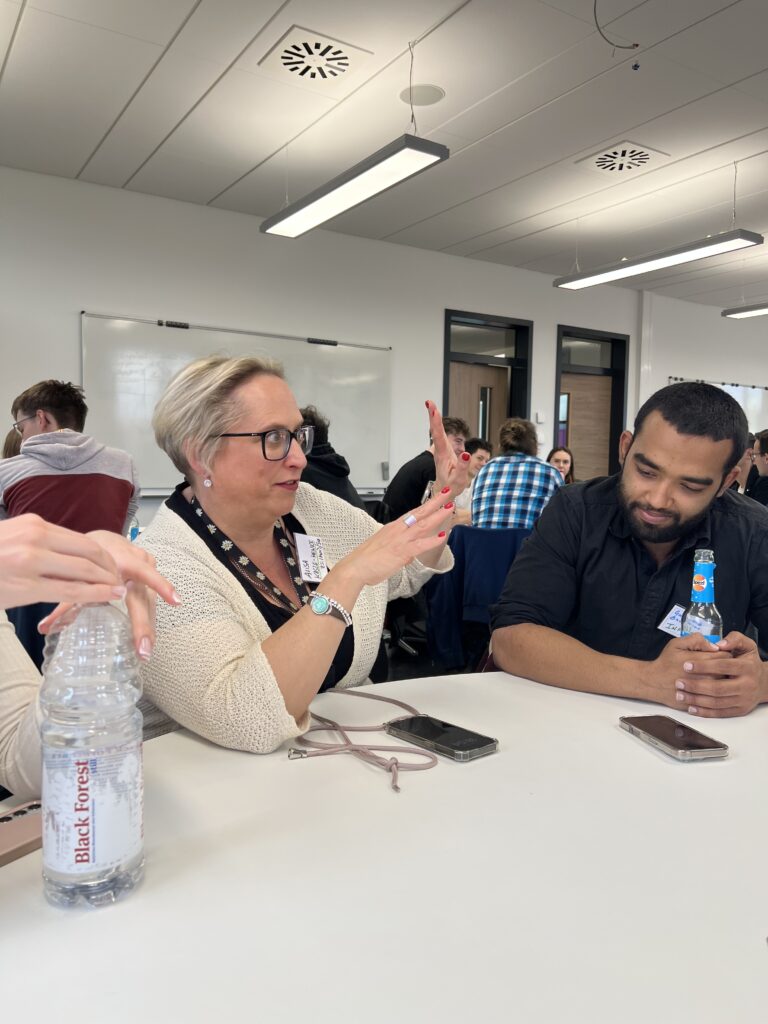
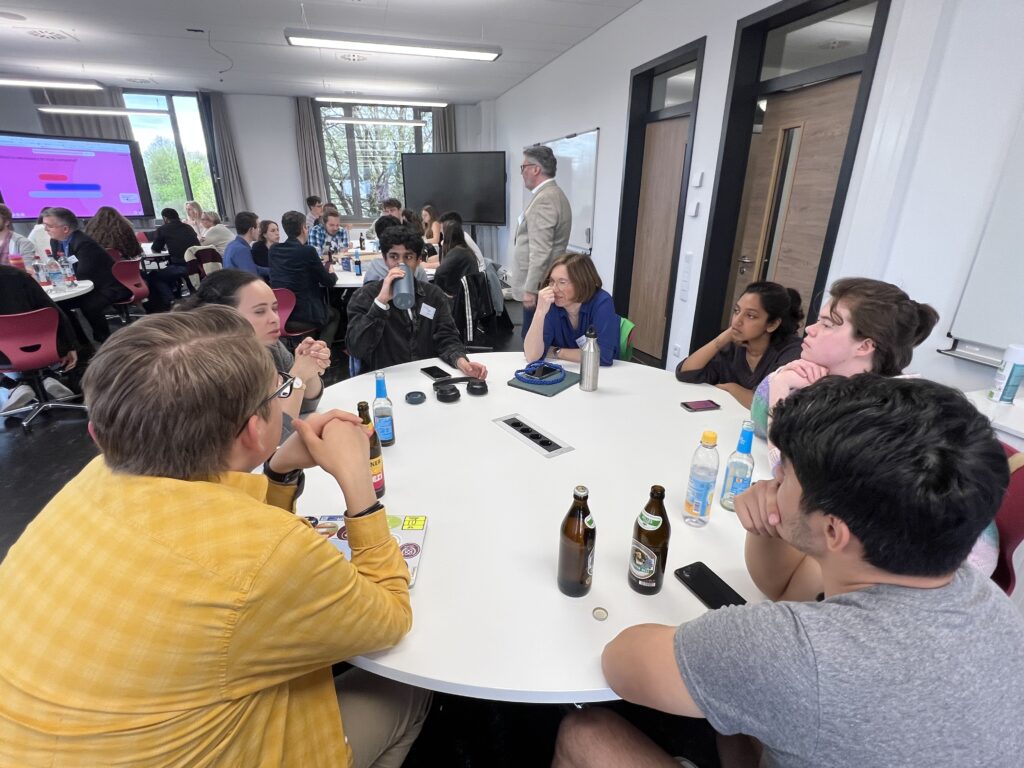
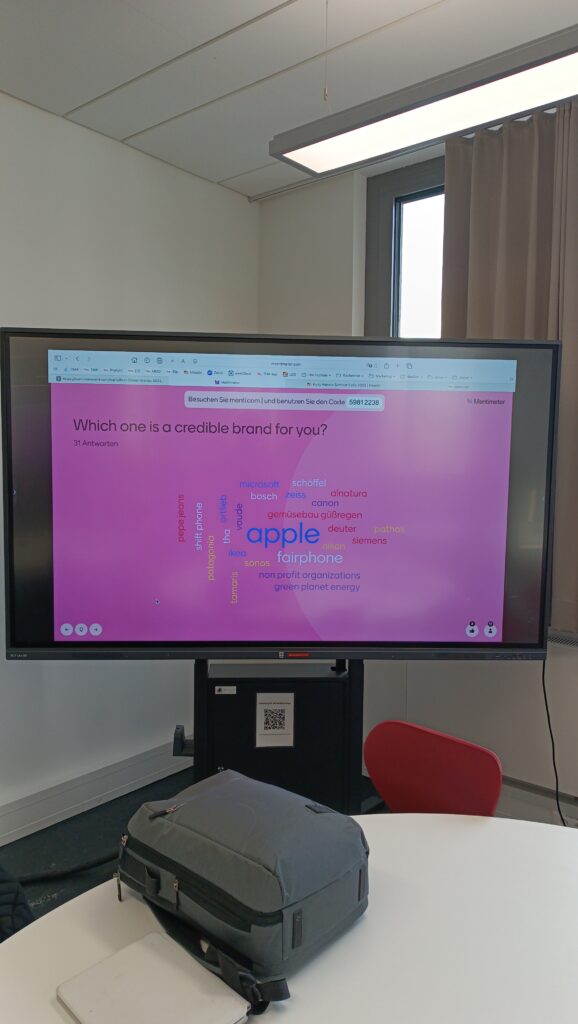
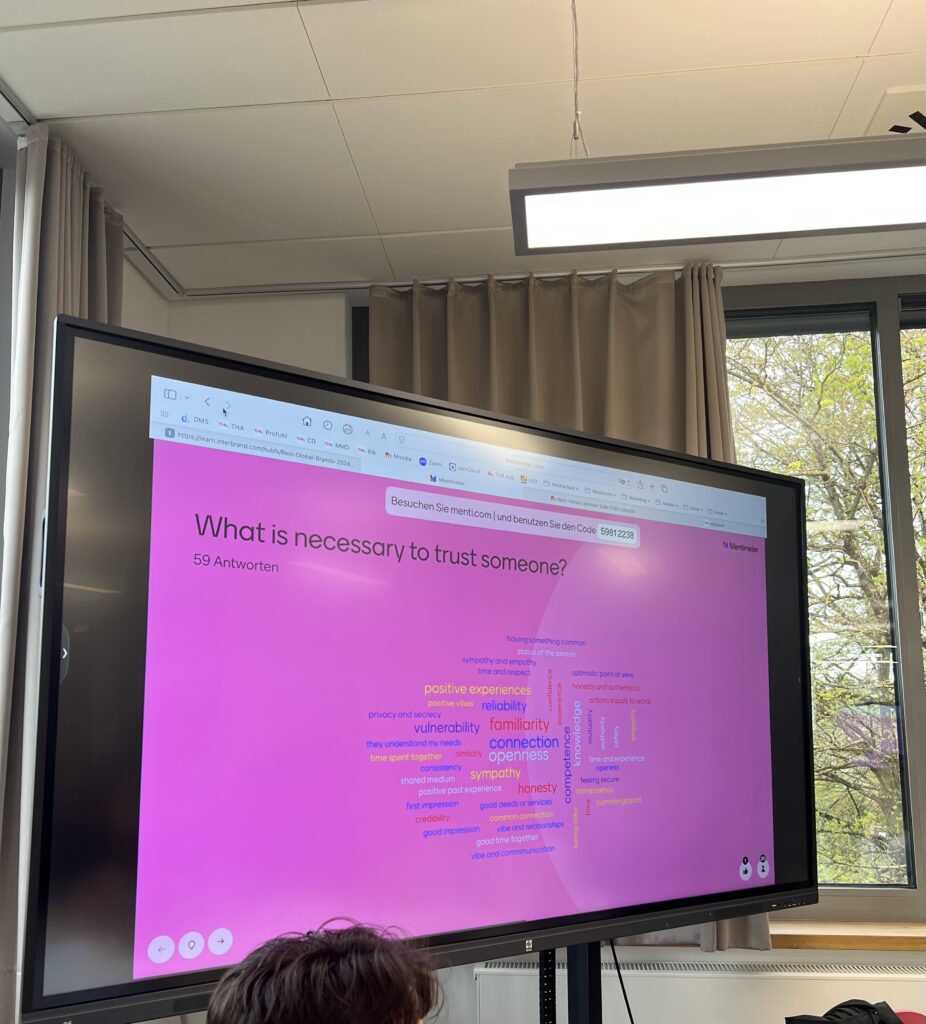
“Trust Issues, Ted Lasso, and Your Favorite Oat Milk”
We don’t just experience branding in the classroom—we live it every day. Think about how you choose your favorite coffee shop or tech brand. Do you feel seen, heard, or understood by that company? That’s branding.
On a broader level, optimism and trust play major roles in politics (or the lack thereof), mental health movements, and even celebrity culture. Ever notice how we rally behind public figures who seem “authentic”? Or how we distance ourselves from those who break trust once? Whether it’s a politician, a pop star, or your go-to brand of oat milk—trust matters.
For example, the feel-good energy of shows like Ted Lasso proves how optimism and integrity still have a place in modern storytelling—and in leadership.
“What MINI, Apple, and a Seminar Taught Me About Being a Human”
This session gave us a whole new lens through which to view branding—and ourselves. We realized that branding isn’t just a marketing tool; it’s a mirror of human connection. Trust, optimism, consistency—these aren’t just brand strategies, they’re life strategies. We began to see how often we’re influenced not by what a brand says, but by how it makes us feel.
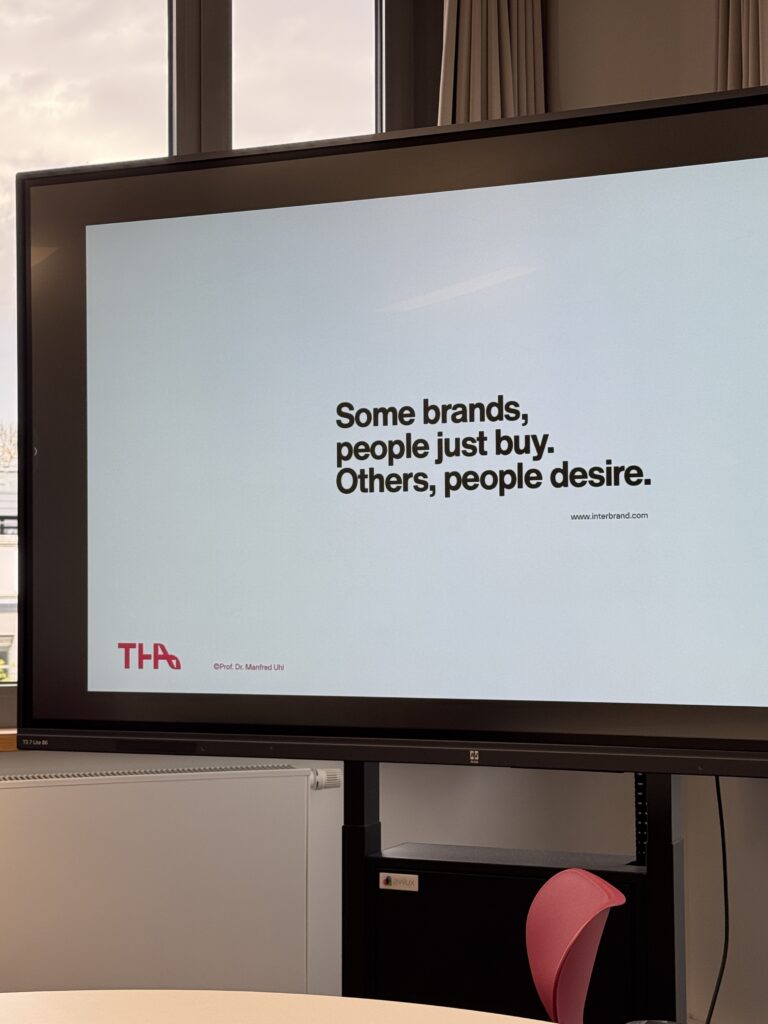
As a group, we started reflecting on our own personal “brands”—how we present ourselves in daily life, in relationships, and even on social media. Are our values consistent? Are we building trust through our actions? Just like the brands we admire, we need to align what we believe with how we show up.
One thing became clear: Real optimism isn’t naive. It’s rooted in authenticity, connection, and purpose. If we want to build trust—with friends, colleagues, or customers—we need to live those values, not just post them.
“Trust Me, We’ve Still Got Questions”
After exploring how trust and optimism intertwine in branding, we’re left with some big, juicy questions that don’t have simple answers. For instance, if trust is so hard to build and so easy to lose, can a brand truly recover once it’s broken that bond? We saw how consistency and authenticity are key, but what happens when a brand stumbles? Can it regain credibility—or is that trust forever damaged?
Another question that surfaced is whether it’s ethical for brands to tap into our emotions so deliberately. If trust is connected to hormones like oxytocin, are companies crossing a line when they use storytelling, nostalgia, or feelings of belonging to influence us?
And then there’s the growing presence of AI in branding—just like when Professor Uhl asked ChatGPT for a definition of optimism. That sparked curiosity: Can we really trust AI-powered brands to be transparent and authentic? Will AI help strengthen trust through personalization, or will it make us more skeptical?
Finally, we wonder how these lessons hold up across different cultures and generations. Do the same strategies work everywhere, or does trust look different depending on where—and who—you are? If this session taught us anything, it’s that trust is complex, emotional, and very, very human. And we’re just getting started.
“Because Homework Can Be Cool Too”
Want to dig deeper? Check out these great links:
📺 MINI’s “Normal, What’s Normal?” Campaign
📺 Nike’s “Winning Isn’t Comfortable” Video
📺 Puma’s “Runner’s High” Feel-Good Ad
📖 Start With Why by Simon Sinek – on building trust and purpose in leadership and branding
📖 Consumers are increasingly driven by trust and emotional connection, as shown in this eMarketer survey on brand loyalty.
Don’t forget: Real Marketing is focused on business with value for the people. Real Marketing always is optimistic!
Authors: Helan Akram Bared & Jonathan Guillen
Leave a Reply